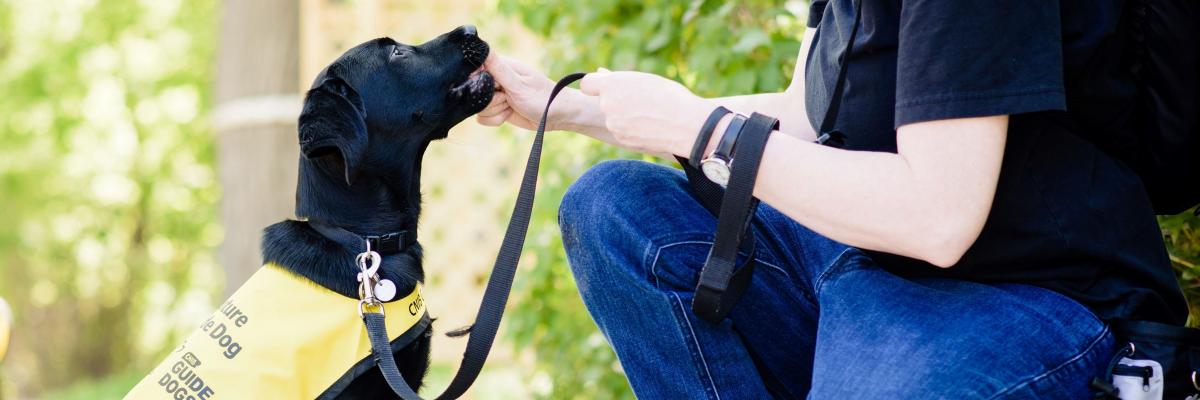By Andrea Critch, Program Lead, Puppy Raising Supervisor
Dogs love to please. Humans and dogs can create a strong, loving bond and one of the best ways to achieve this is through positive reinforcement.
Positive reinforcement is when you reward a dog for completing a desired action. It is more effective to reward a dog for good behaviour than it is to punish a dog for bad behaviour. With positive reinforcement, your dog is more likely to complete a task because they want to please you, and in turn, leading to a loving relationship.
For example, if your dog runs away from you, what do you do when it comes back? Do you reward them with a "Good Boy" or "Good Girl" for returning and give them a high value food reward? Or instead, do you say "bad dog" because they ran away? A common mistake is to punish the dog, which instead teaches the dog that they will be punished when they return to you, which creates a negative association with the “recall” command. However, if you show happiness and excitement when the dog returns to you, and you provide them with love or praise and a food reward, your dog will continue returning to you when called.
Positive reinforcement can include:
- food reward
- verbal praise with an upbeat tone
- toy reward
- play
- physical touch (a pat on the head, belly rub, etc.)
It's also important for you and your dog to have fun with the training process. Keep training sessions short and focus on having a positive attitude when training.
Throughout the raising and training stages of your dog’s life, provide different levels of positive reinforcement, so you can reduce how often you need to reward them as they age.
